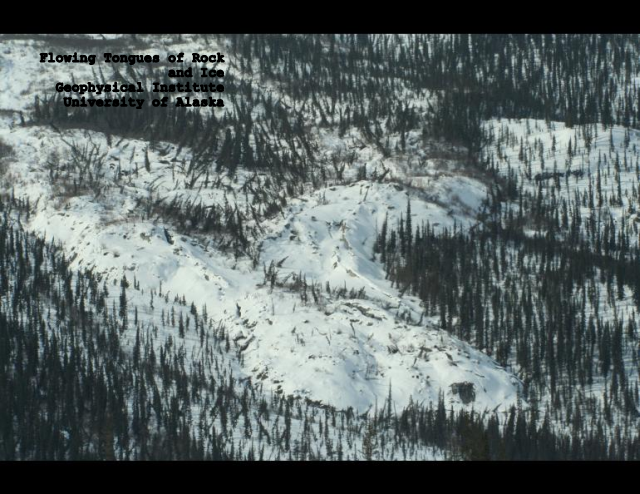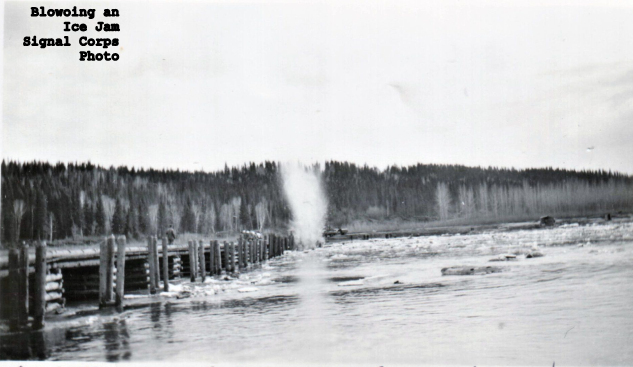
Ice posed a much bigger problem than snow to the soldiers working on the Alaska Highway into the winter of 1942. When snow came, bulldozers and graders could remove it relatively easily. Ice was a different matter. At more than 250 places between Watson Lake and the Alaska border frequent icing caused delays. In the Subarctic, ice and permafrost lie only a few inches below the surface of the ground even during summer. During winter, they come to the top.

Streams and rivers freeze from the bottom up. Ice doesn’t form in the swift flowing current, instead it forms on the sides and bottom of a stream, narrowing the channel and raising the bottom until the water overflows, broadening the stream and forming new channels. Ice covered and buried approaches to bridges built back in the summer. And, when spring arrived in 1943, floods would wash the bridges away. One bridge on the highway was rebuilt seven times.

In the frigid Subarctic freezing water creates “mushroom ice” in culverts and ditches, The water freezes, the current bleeds through, and more water freezes. This process repeats itself endlessly and the ice builds in layers. Eventually huge blocks of honeycombed ice grow to block the road. Troops had to bring oil drums and burn the oil to thaw out culverts, and they had to repeat the process every few hours.
Miserable weather be damned, though. In October and November the ordinary men, deep in the subarctic wilderness, soldiered on. And they completed their extraordinary road.